Diana Barquero lives and works in Berlin, Germany. Through a multi-faceted practice encompassing video, sculpture installations and photography, the artist highlights points of friction, transformation and collapse within a socio political context. The recent work if you think you can grasp me, think again focuses on a protected wetland in Southern Costa Rica diminished by extensive agricultural farming and pesticides. Barquero presents the dichotomy, exploring the ‘productive spaces’ created within this uneasy co-existence. Recent exhibitions include Scratching the Surface, Hamburger Bahnhof, Berlin, 2021; Sentient Matter, D21 Kunstraum Leipzig, 2021; If you think you can grasp me, think again, T.O.P (Transdisciplinary Project Space), 2021.
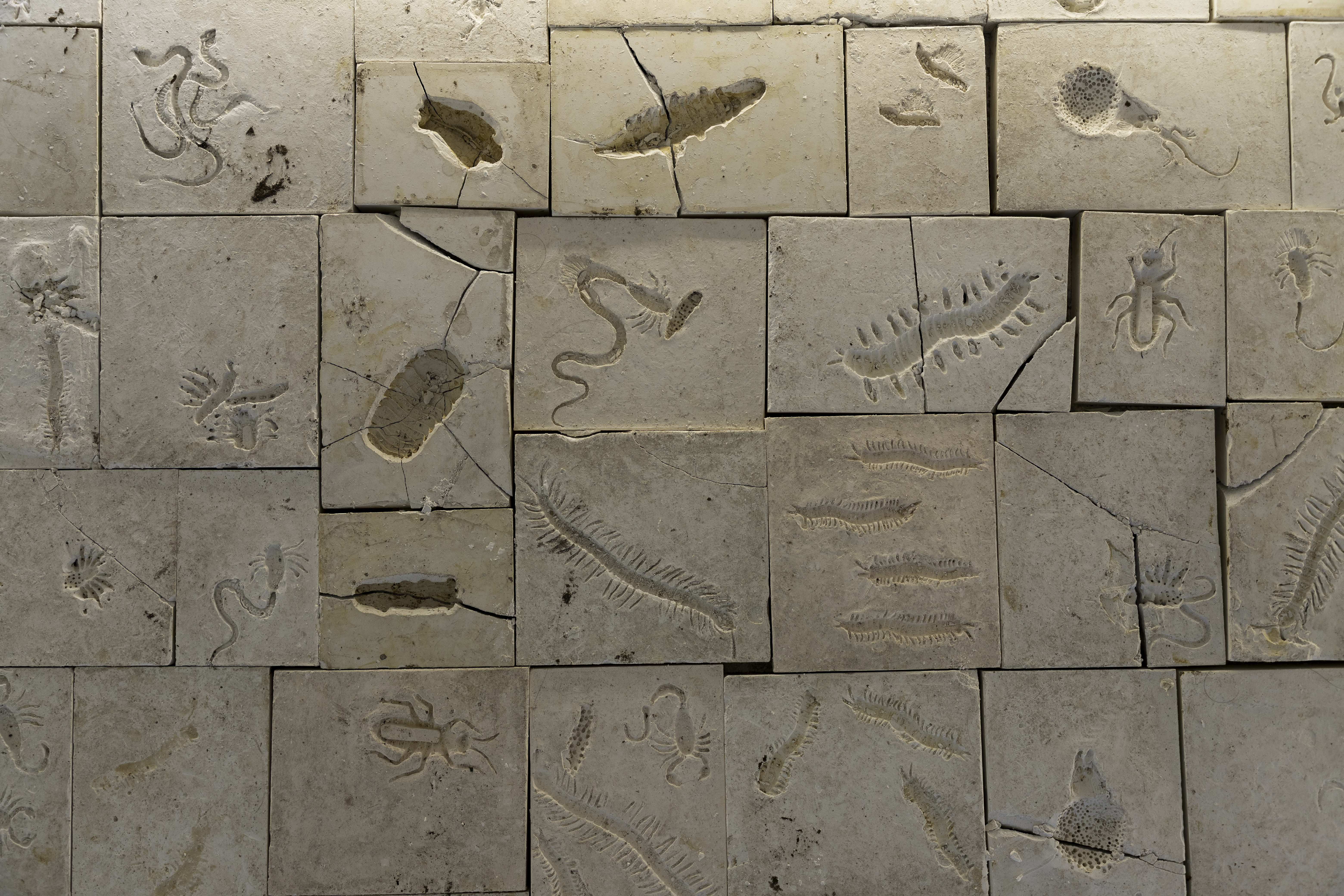
De bichos y bestias en la conquista de los suelos. 320 plaster tiles with imprints of insects. (detail) SOMA, Mexico City. 2022. Image: Courtesy the Artist. Photography: Aimeé Suarez.
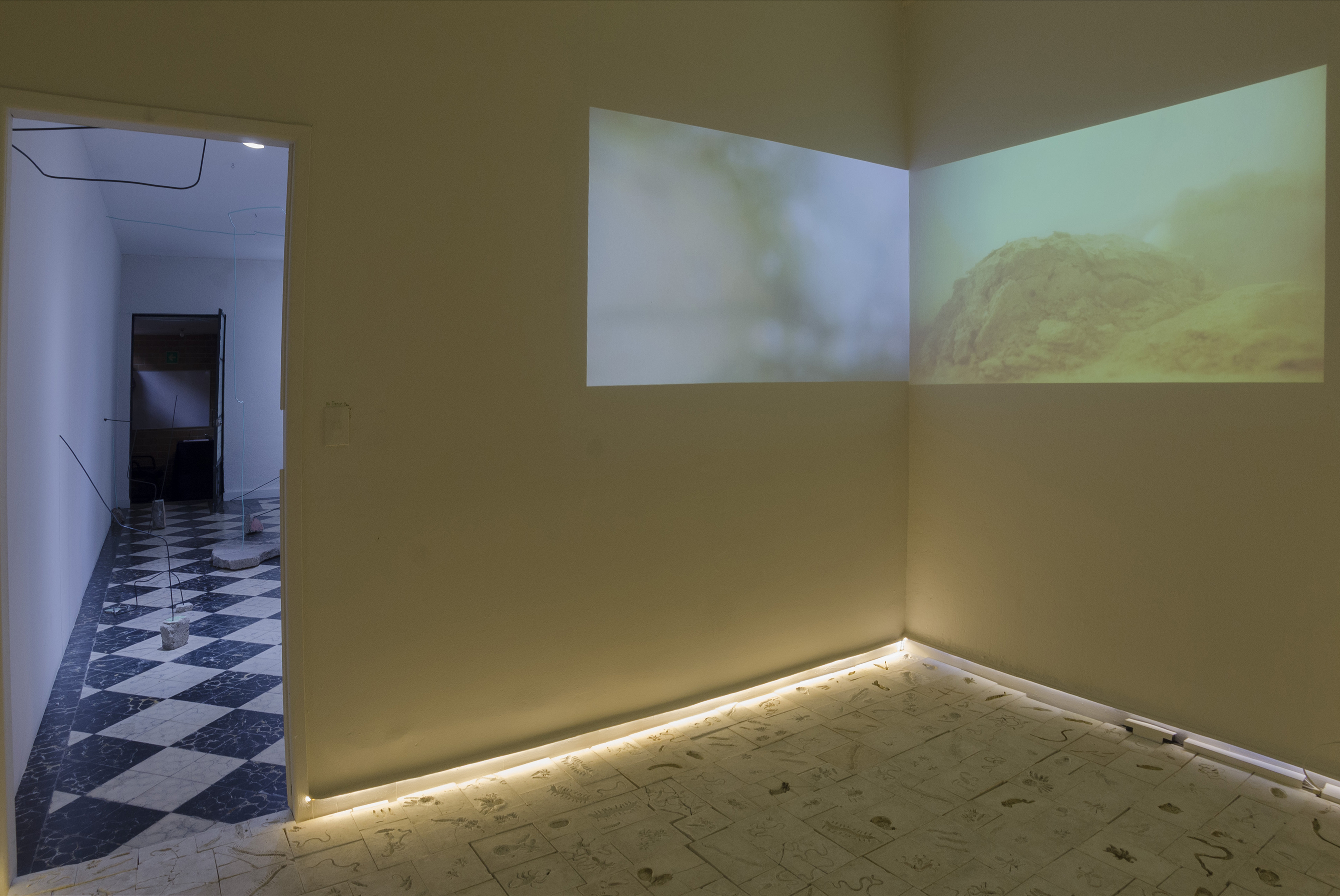
De bichos y bestias en la conquista de los suelos. Video installation and tiles view. SOMA, Mexico City. 2022. Image: Courtesy the Artist. Photography: Oscar Formacio
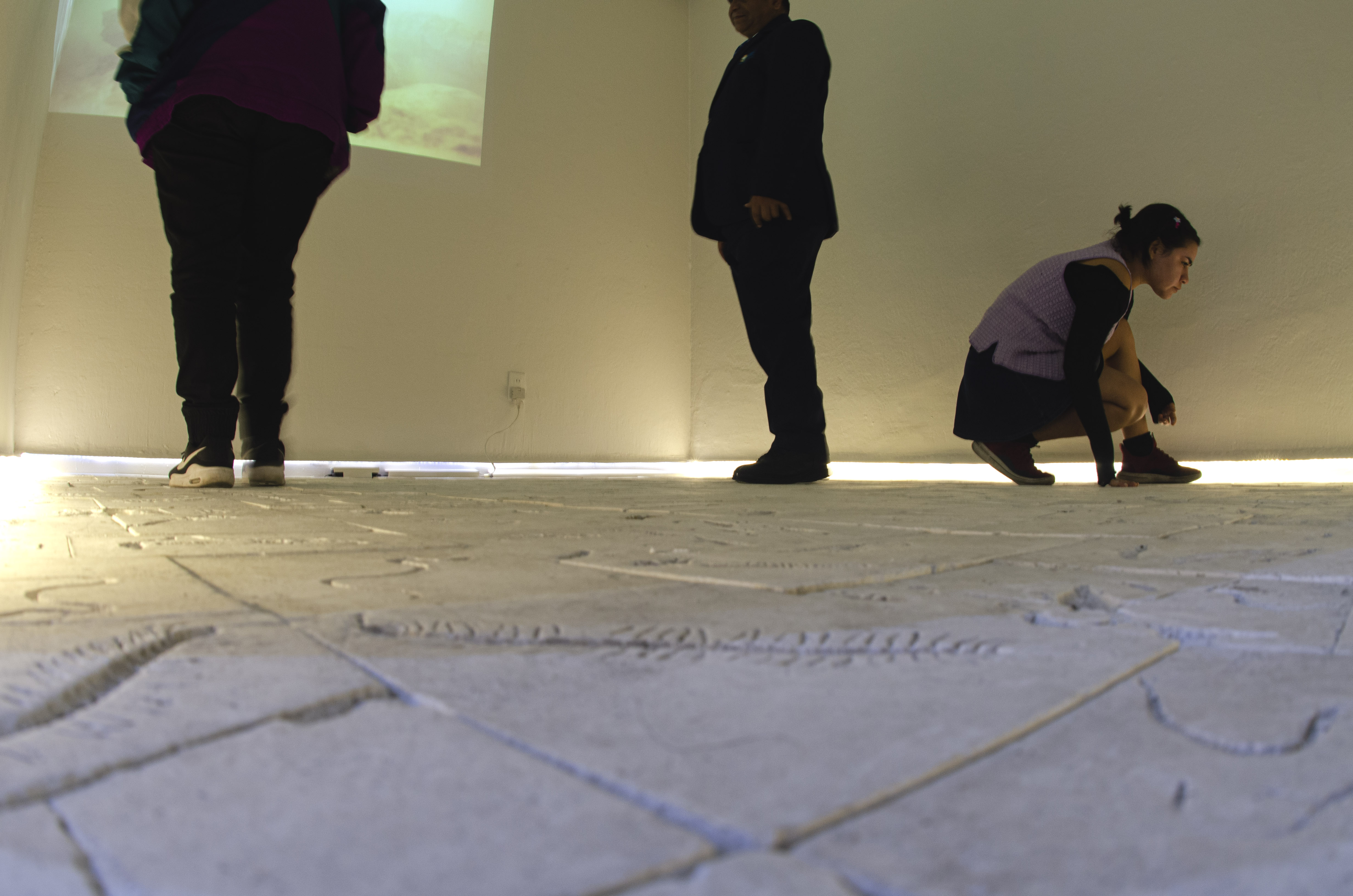
De bichos y bestias en la conquista de los suelos. Installation View. SOMA, Mexico City. 2022. Image: Courtesy the Artist. Photography: Oscar Formacio
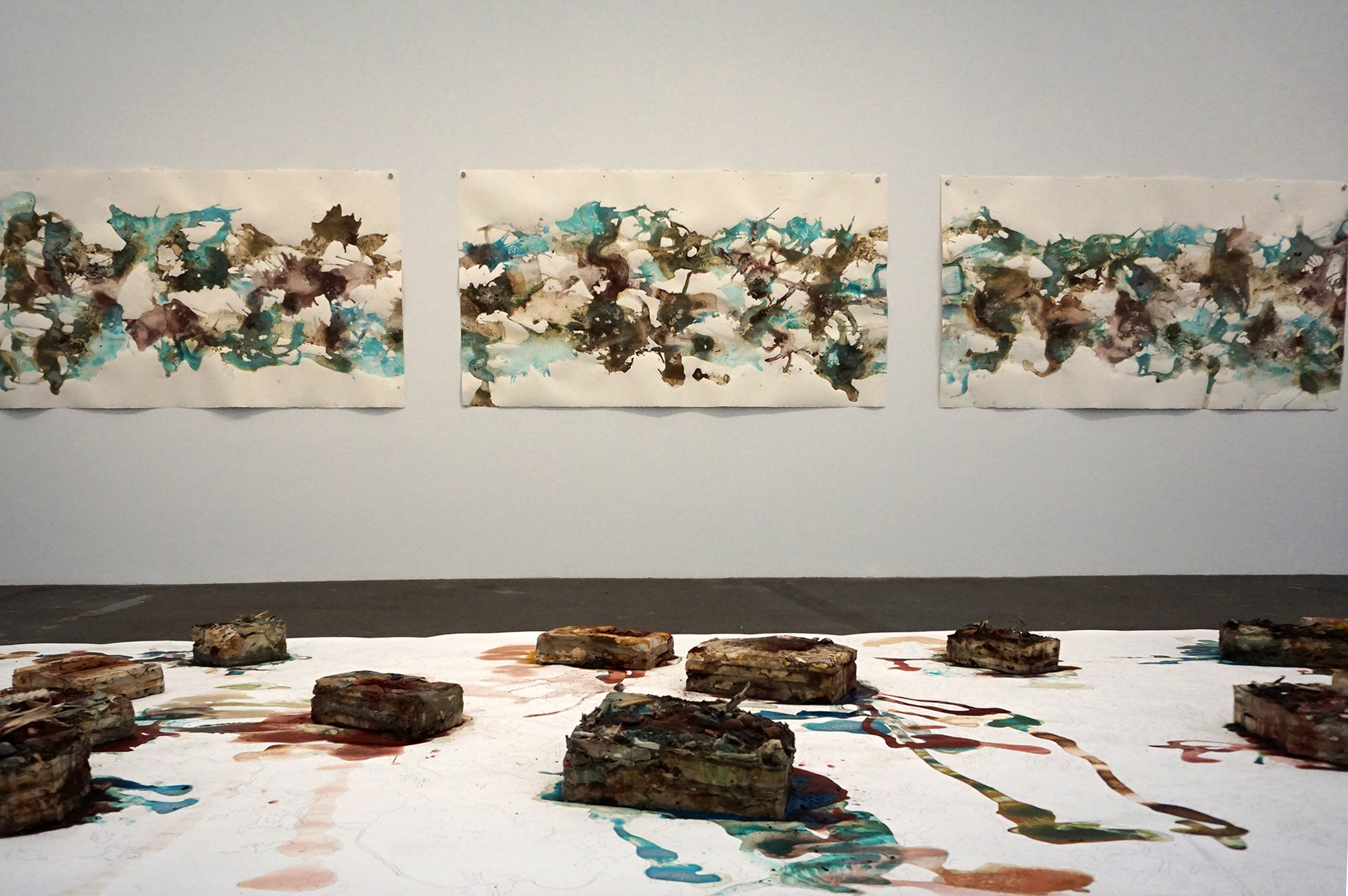
If you think you can grasp me, think again. Installation view. Hamburger Bahnhof-Museum für Gegenwart- Staatliche Museen zu Berlin. Germany, 2021. Image and photography: Courtesy the Artist.
If you think you can grasp me, think again is an artistic project tha deals with the transformations of National Wetland Terraba Sierpe, a wetland located in Southern Costa Rica. This wetland is a protected area of great environmental importance. However, this place is being shrunk and transformed by multiple external aggressions. Banana, palm oil, rice and pineapple are expanding the agricultural border filling the land and the water with pesticides, fertilizers and polluted sediments.
Changes in land use, struggles for land rights, workers, and the traces of pesticides are inscribed in the wetland. They are present in the different materialities and creatures that mutate, adapt, and decompose in the aquatic landscape. My artistic procedure seeks to read these hidden alphabets in the layers of sediment, water and chemicals. These alphabets that, through their traces, show the slow but progressive violence that is exerted onto the land and the water. - Diana Barquero
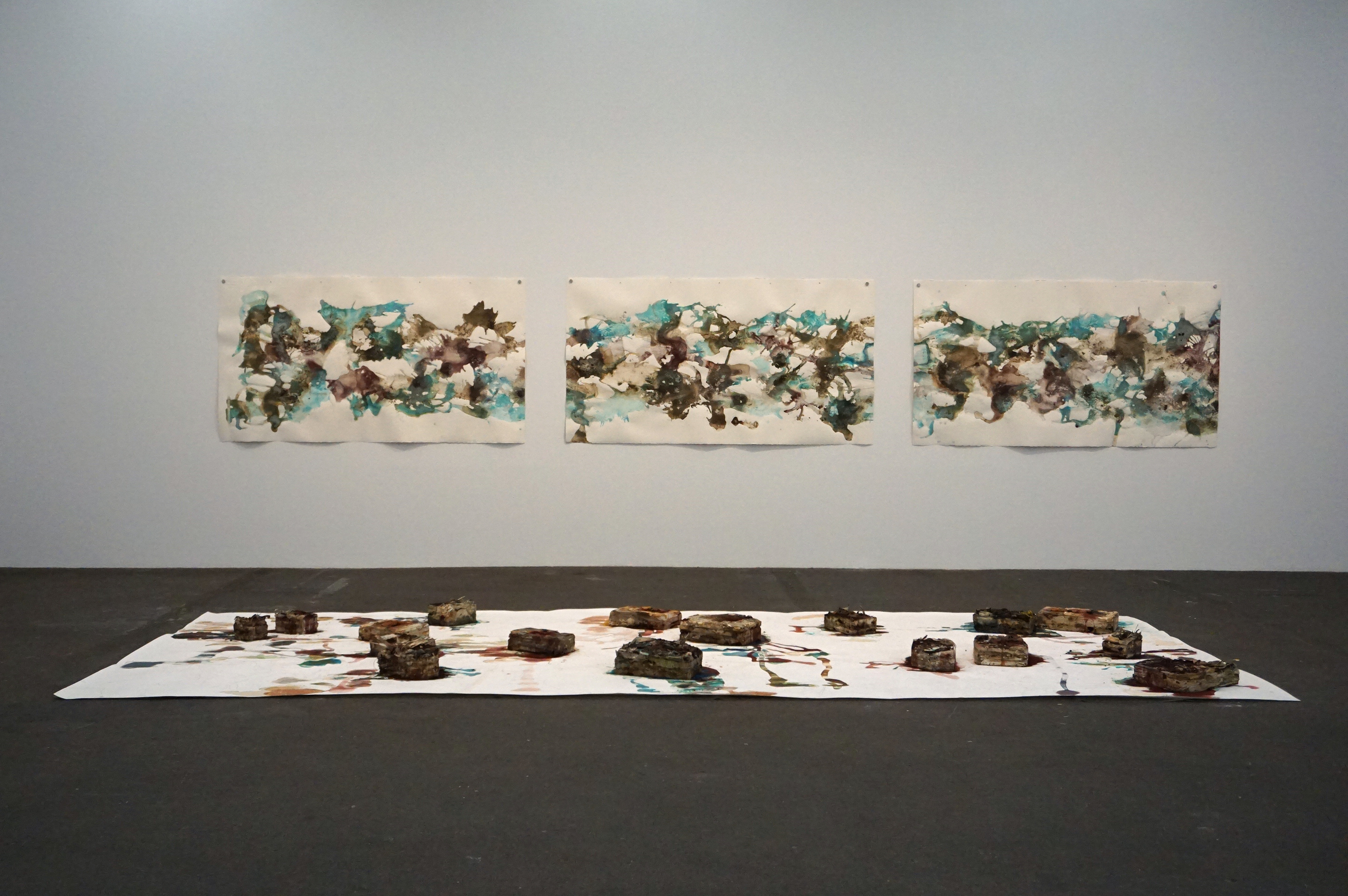
If you think you can grasp me, think again. Installation view. Hamburger Bahnhof-Museum für Gegenwart- Staatliche Museen zu Berlin. Germany, 2021. Image and photography: Courtesy the Artist.
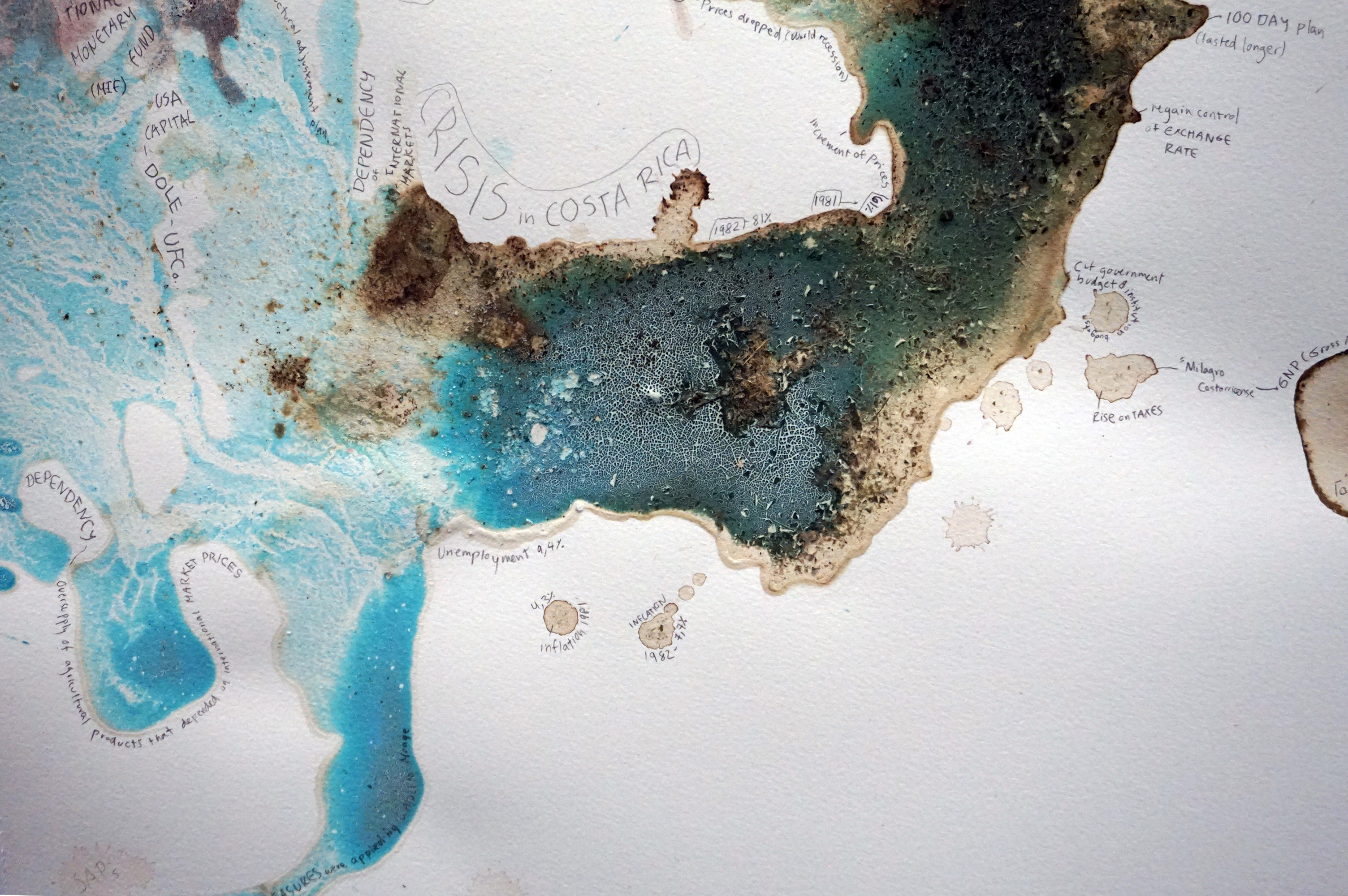
Flowing Timeline. Pesticides, plants, soil, clay and pencil on aquarelle paper. Detail. 3 panels 110 x 160cm each. Hamburger Bahnhof-Museum für Gegenwart- Staatliche Museen zu Berlin. Germany, 2021. Image and photography: Courtesy the Artist.
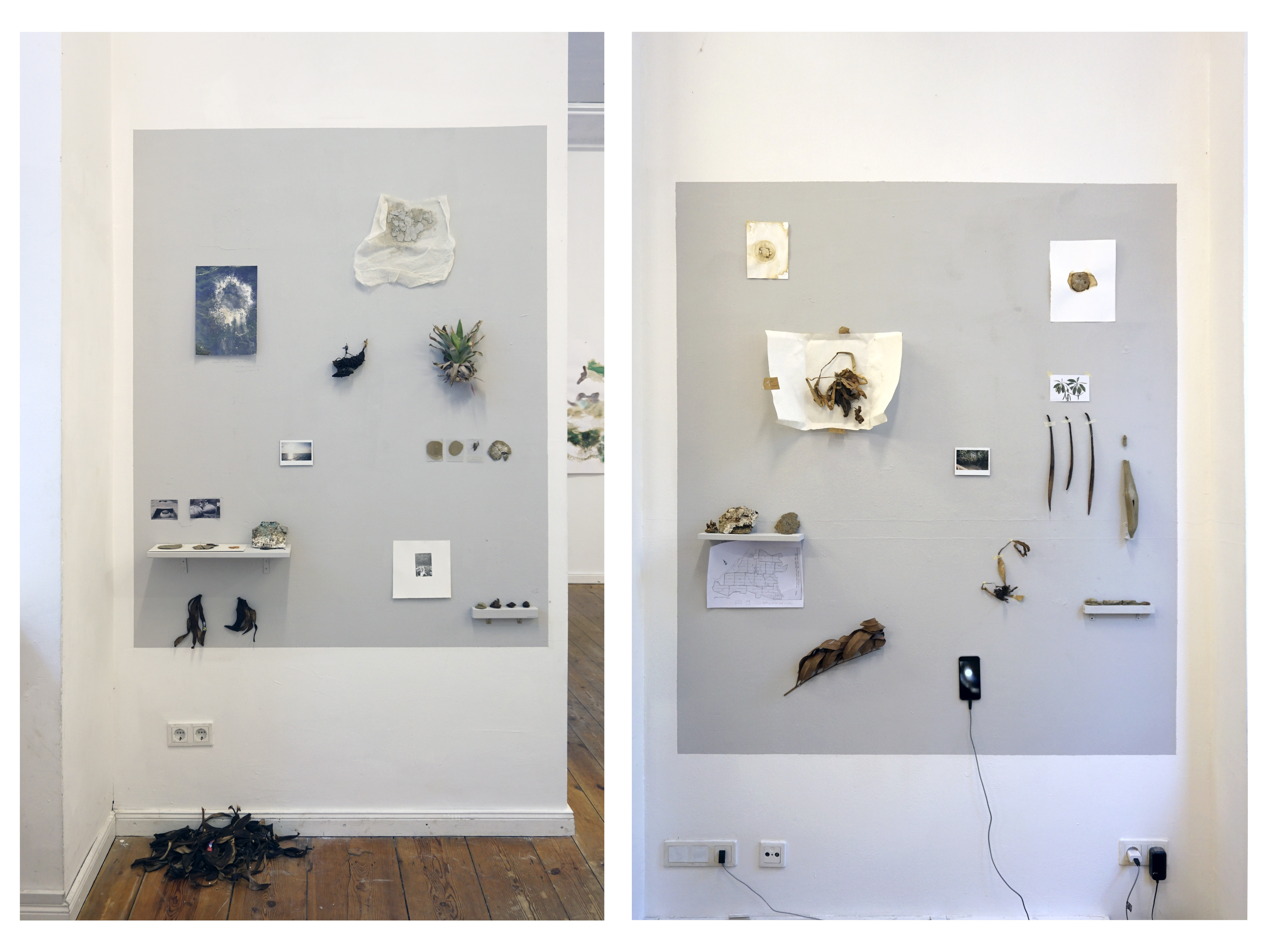
The Collection. Plants, photo-documentation, soil, and different objects from nearby areas of Natiaonal Wetland Térraba Sierpe. Variable dimensions. T.O.P Projectraum. Berlin, Germany, 2020. Image and photography: Courtesy the Artist.
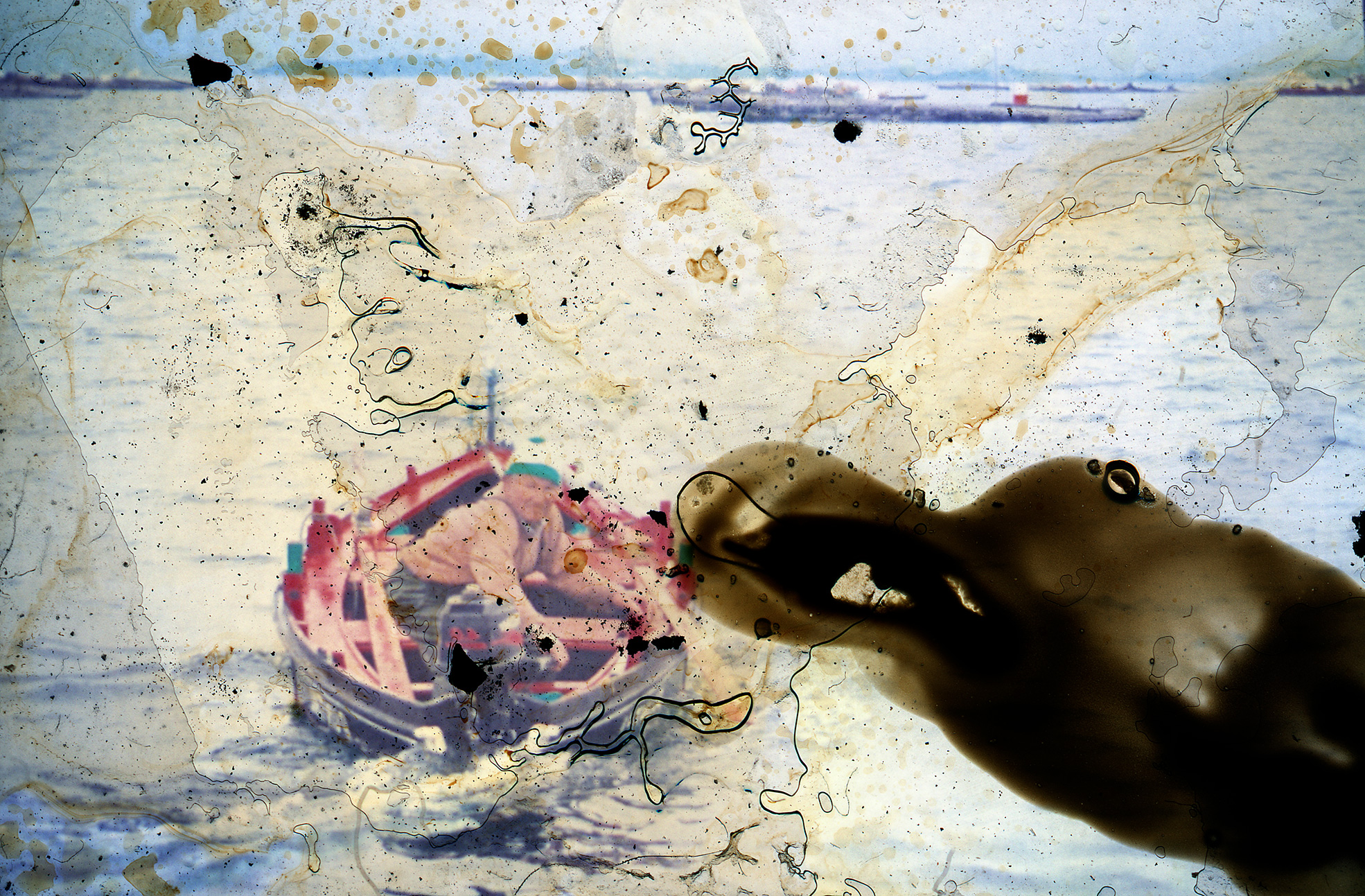
Triggering the apparitions: Spectres of Chemical Seascapes. Project in collaboration with Soledad Castro. Altered slide-photography by using emerging contaminants (house-hold chemicals). Photograph from Gonzalo Iglesias’s personal photo archive, 2018. Part of lecture performance with Soledad Castro RGS, London.
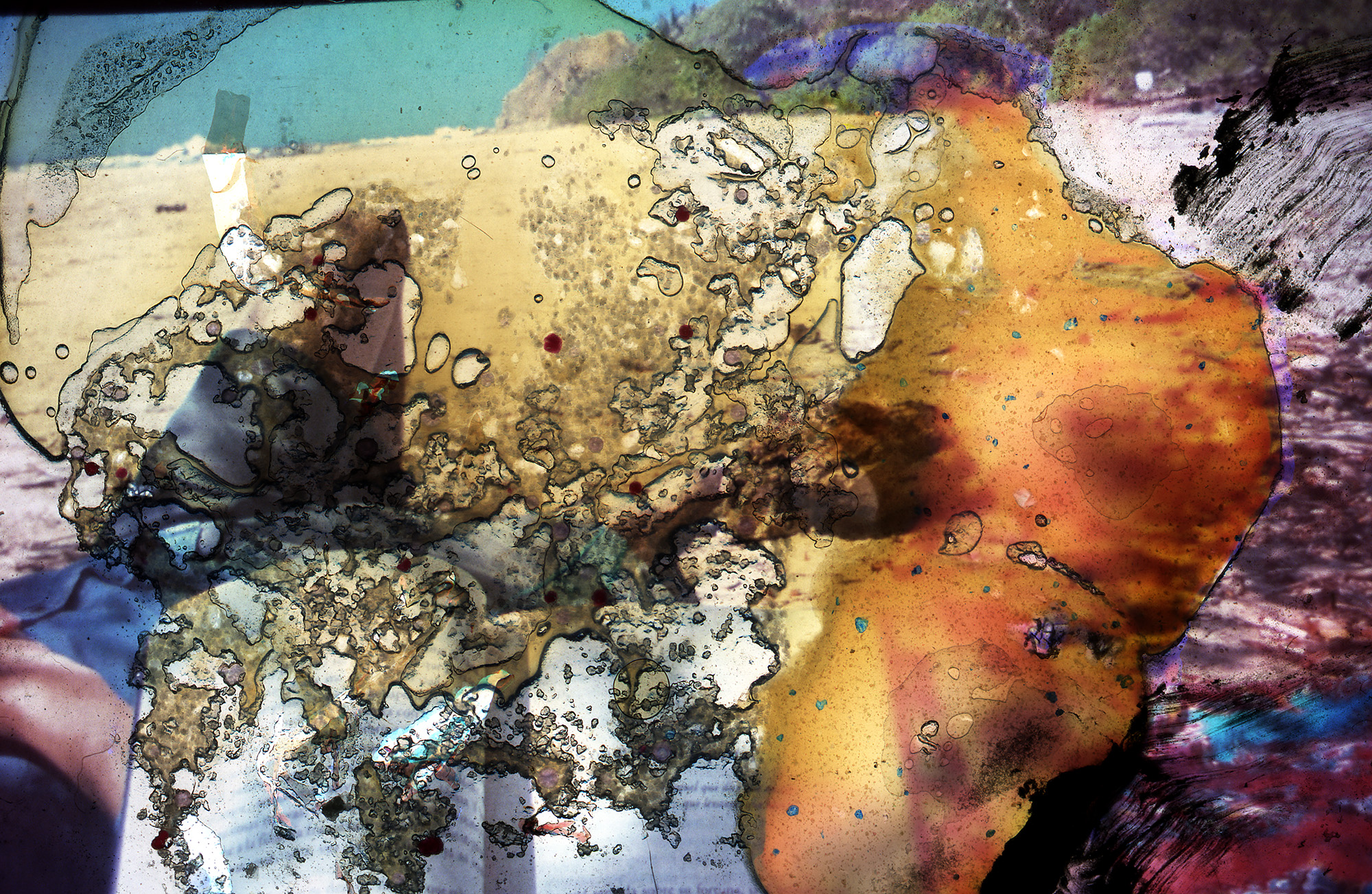
Triggering the apparitions: Spectres of Chemical Seascapes. Project in collaboration with Soledad Castro. Altered slide-photography by using emerging contaminants (house-hold chemicals). Photograph from Diana Barquero’s personal photo archive, 2018. Part of lecture performance with Soledad Castro RGS, London.
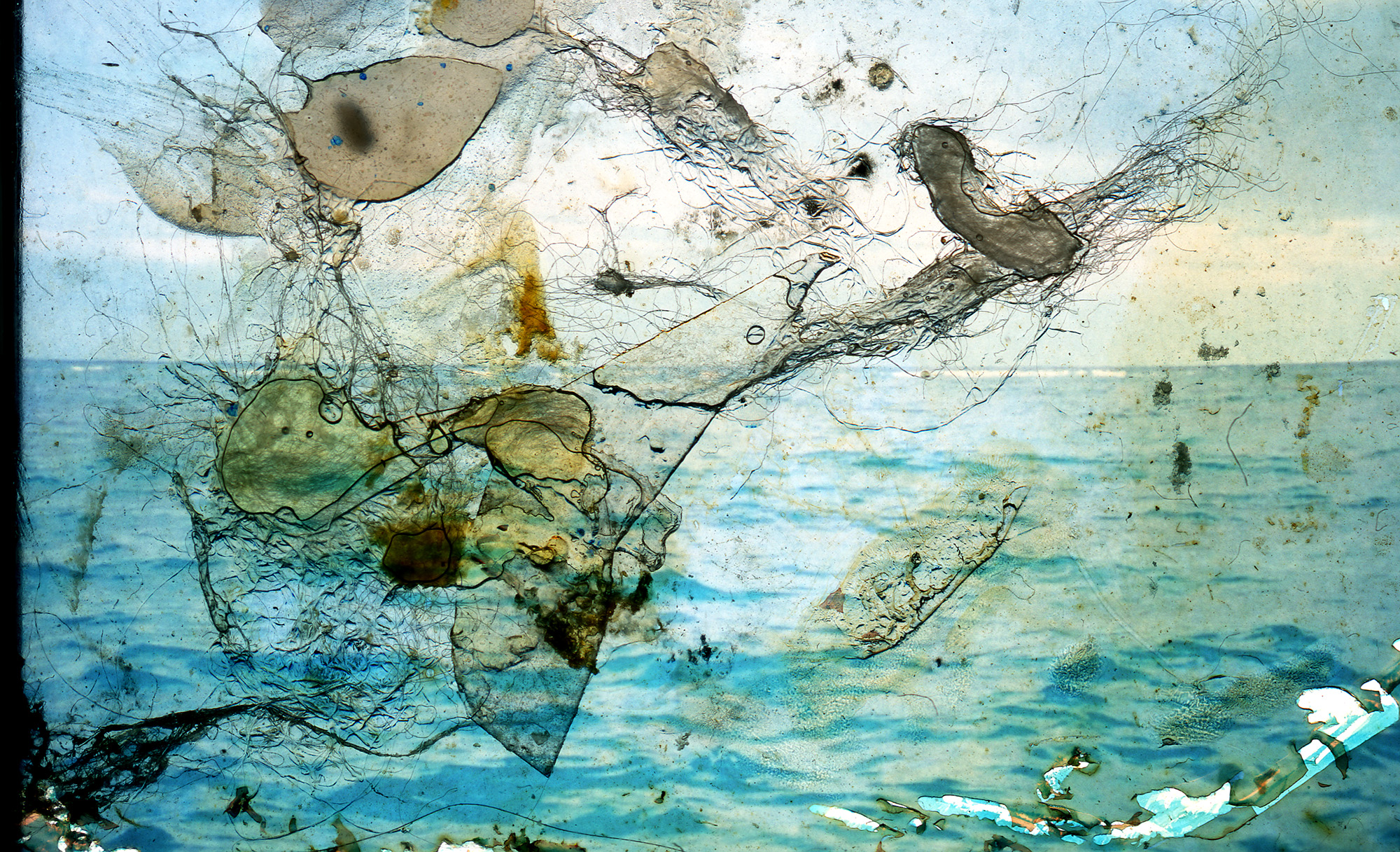
Triggering the apparitions: Spectres of Chemical Seascapes. Project in collaboration with Soledad Castro. Altered slide-photography by using emerging contaminants (house-hold chemicals). Altered photograph from Sara Granata’s personal archive, 2018. Part of lecture performance with Soledad Castro RGS, London.
Press
-

Book collaboration
Imagining Apocalyptic Politics in the Anthropocene Edited By Earl T. Harper, Doug Specht, Routledge, 2021 Chapter: Triggering the apparitions, Spectres of chemical seascapes By María Soledad Castro Vargas, Diana Barquero Pérez
-

Interview
Scratching the Surface - Diana Barquero Pérez - Statliche Museen zu Berlin